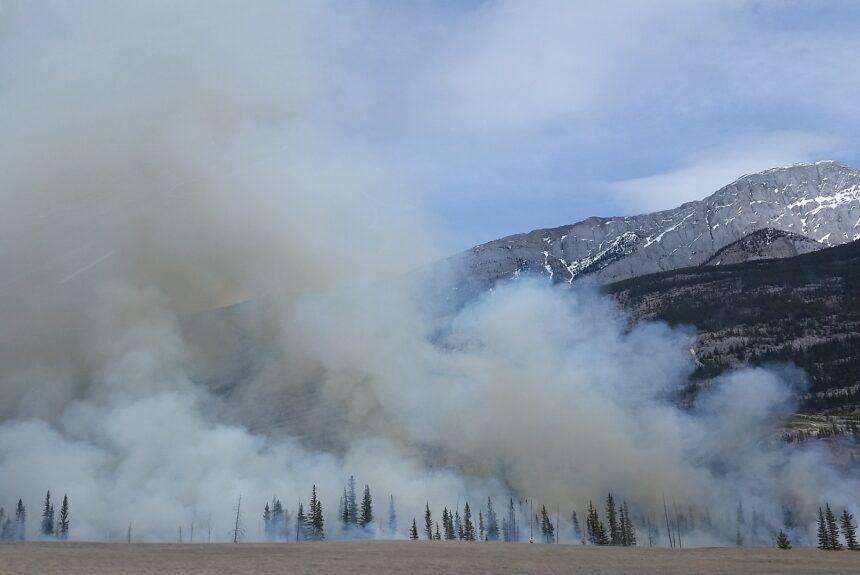In our digital age, we have all been able to witness the devastation of a wildfire as it occurs. Modern wildfires are burning larger and with the ability to cause tremendous harm to anything in their paths. Without substantial changes, the future of wildfire management is grim. But is it possible to not only get wildfires under control but to ‘burn back better?’ A new report thinks the answer is yes.
>>>READ: Without Reforms to the Environmental Review Process, Wildfires Will Grow Worse
The Property and Environment Research Center (PERC) recently released its new Burn Back Better report, which focuses on how Western states can encourage prescribed fires on private lands. To grasp why this is needed, one only needs to look at some of the numbers provided by PERC for context:
“Since 2005, the United States has three times eclipsed 10 million acres burned by wildfires in a year—an unfathomable total just a few decades ago—with the vast majority of that acreage concentrated in the West. Modern wildfires are not only burning larger areas but are also more harmful for people, forests, and the environment. Nearly 100,000 structures have burned in wildfires since 2005, with two-thirds of that destruction occurring since 2017…And they have released massive quantities of harmful air pollutants, including 112 million tons of carbon dioxide in California alone during 2020—the equivalent of adding 25 million cars to the state’s roads.”
Obviously, something must change but the government has not been much help here. Aside from the climate changing to create drier conditions, poor forest management and zoning that closely meshes the wild with urban areas have increased fire potential. Proper long-term policy for forest management, zoning, and firefighting is important, but policy battles take a while to wage.
As an immediate solution, prescribed burns are key. Prescribed burns light low-intensity fires to specific landscapes under controlled conditions. Doing this can build forest resilience, reduce extreme wildfire risks, and help other land-management goals. Prescribed burning is an effective solution, but has not had fast and widespread implementation.
PERC argues that there is a way to ramp up prescribed burn implementation:
“Much of the wildfire debate understandably focuses on the role of national forests, which make up a majority of forested acres in many western states. But expanding the use of prescribed fire on state, private, and tribal land would have significant benefits for forest resilience, community protection, and environmental conservation…State policymakers and private land managers may be able to ramp up use of prescribed fire more quickly than the federal government, especially considering recent controversies over the U.S. Forest Service’s use of prescribed fire.”
Increasing prescribed burns on private land is especially important. Private lands, especially in the American West, are often found between wildland-urban interfaces and remote public land. This situates private land in a key position within a matrix of wildfire-prone land.
Would landowners be on board with conducting prescribed burns? PERC thinks so:
“Prescribed fire not only benefits their land but can also be a more cost-effective management tool than mechanical thinning and other methods. Prescribed fires also produce numerous benefits for surrounding landowners and communities, although landowners may receive no reward for producing these benefits. Surveys suggest that, for these and other reasons, landowners are interested in ramping up prescribed fire.”
There are some roadblocks here. Prescribed burns have fallen out of popular practice, leaving many landowners without the experience and resources needed to feel comfortable lighting controlled fires. There are not enough experienced practitioners who can come and help with such burns. Plus, regulatory red tape, such as state permitting practices for controlled burns, can be burdensome and hard to understand and walk through.
>>>READ: Why are Wildfires Getting Worse? Regulations Are Partly to Blame
PERC has developed some recommendations that can help remove some of these roadblocks:
- Improve permitting systems to remove bureaucratic obstacles to prescribed burning.
- Develop more flexible approaches to setting “burn days” in which different types of prescribed fires can be implemented.
- Design training opportunities and other resources to educate and support, rather than regulate, landowners’ use of prescribed fire.
- Clarify and improve liability regimes to reflect the public benefits of prescribed fire.
- Harness private investment to benefit forest health through catastrophe bonds.
The full report can be found here.
Wildfires are a growing problem here in the United States, and current practices fail to properly address or reduce the issue. This is not something that regulatory red tape or government action can solve. America needs private landowners to start burning back better.
The views and opinions expressed are those of the author’s and do not necessarily reflect the official policy or position of C3.
